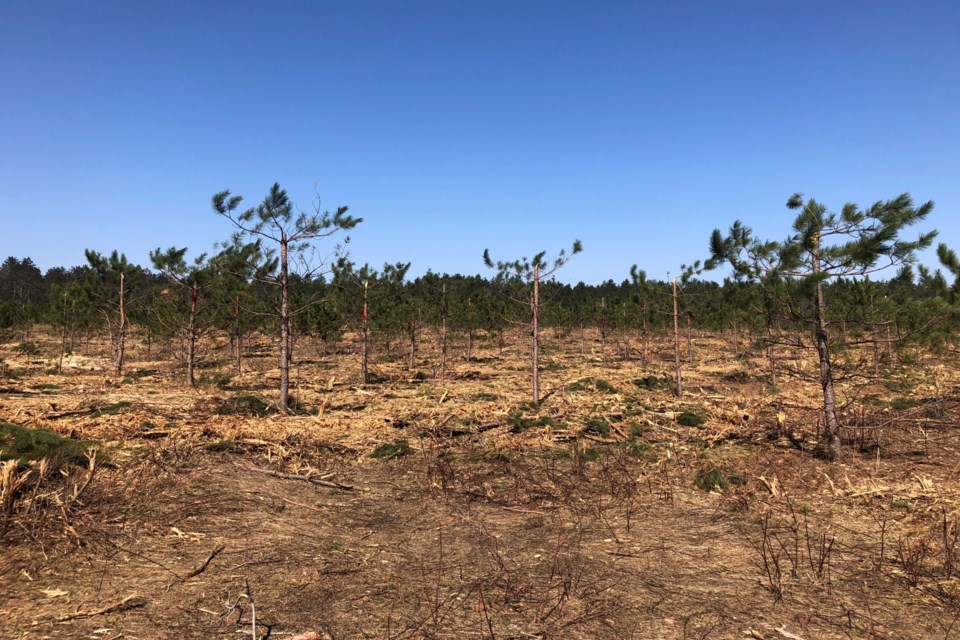NEWS RELEASE
MICHIGAN DEPARTMENT OF NATURAL RESOURCES
***************************
Folks rolling along Michigan roads may notice some strange-looking forestry: Stands where some red pines have been cut and others remain, but have their tops sheared off.
The scenes – near Roscommon, along U.S. 2 near Manistique and near the Cheboygan County town of Wolverine – look forlorn. But despite their disheveled look, these trees will create seeds to make sure red pines grow in Michigan well into the future.
“Red pine is a difficult species to regenerate naturally because they don’t generate cones on a regular basis,” said Jason Hartman, silviculturist for the Michigan Department of Natural Resources. “But it’s an important tree in Michigan for forest restoration, timber and carbon sequestration. We plant seedlings as the most common method to regenerate red pine, but we need large volumes of seed to grow that many seedlings.”
When tops are cut out of the trees, the bottom branches become bushy and generate cones that can easily be harvested to provide more seeds for future plantings.
“We know it looks strange right now, but it will look better as the trees respond and as we continue to manage those seed collection areas,” Hartman said.
Red pine trees typically grow 50 to 80 feet tall but can reach 100 feet in height. That makes them perfect for one of their key uses: as utility poles. Red pine also is used for lumber and paper, making them a valuable part of Michigan’s nearly $22 billion forest economy.
Michigan’s landscape supports about 220 million red pines, according to the USDA Forest Service. Red pine trees also provide food and shelter for a variety of wildlife, including birds and small animals.
The DNR plants approximately 4 million red pine seedlings per year in the northern Lower Peninsula and Upper Peninsula. Cones are collected in September, dried and then frozen for future use.
***************************



